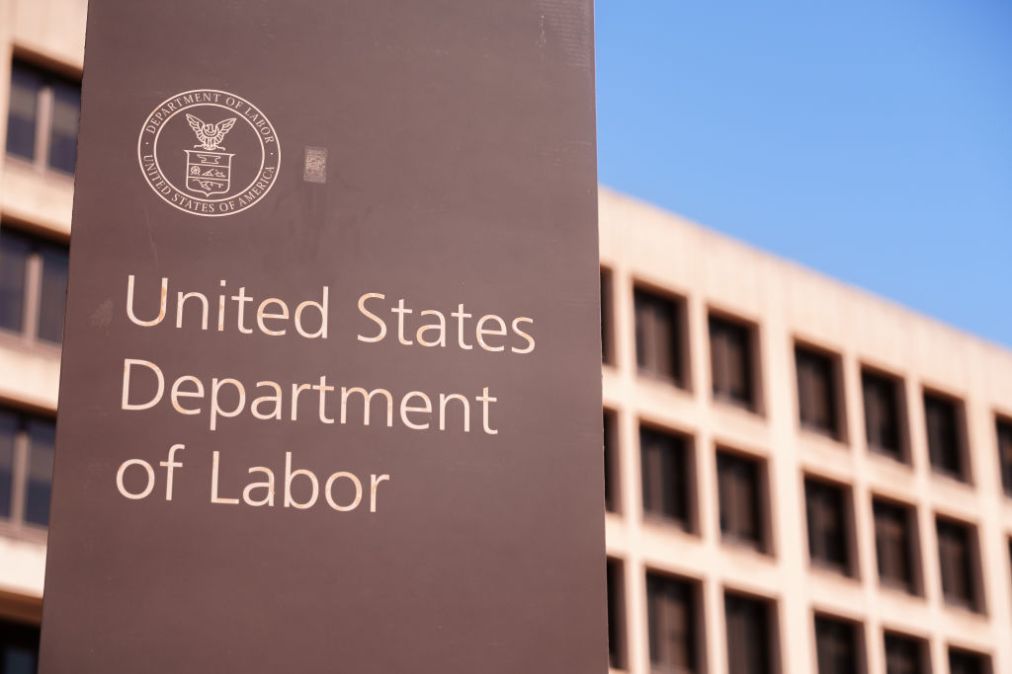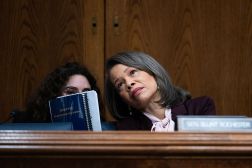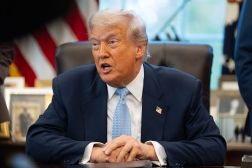DOL’s to-do list in Trump AI plan: Retraining, data collection, apprenticeships

With heavy input from Silicon Valley and seemingly unanimous approval from Big Tech CEOs, President Donald Trump’s Artificial Intelligence Action Plan appears to have something for everyone at the top of the flourishing AI industry. The Department of Labor and other agencies, meanwhile, are charged with looking out for “the workforce that will build, operate, and maintain it.”
The White House’s AI plan, released Wednesday along with three AI executive orders, calls out the need for “roles such as electricians, advanced HVAC technicians, and a host of other high-paying occupations” to build the infrastructure that will “power America’s AI future.”
Investing in that workforce — and identifying “priority roles” to carry the load — will be part of a multipronged, DOL-led cross-agency effort, per the plan, which attempts to assuage well-founded concerns that the emerging technology will reshape, if not decimate, substantial parts of the American workforce.
With that dynamic in mind, the AI Action Plan has multiple callouts for the Labor Department to lead initiatives on skills development and AI education. One measure tasks DOL and the Commerce Department with spearheading a national effort on the development of skill frameworks and competency models for roles needed in the buildout of AI-related infrastructure.
DOL is also asked to team with the National Science Foundation and the Education, Energy and Commerce departments on the “creation of industry-driven training programs that address workforce needs tied to priority AI infrastructure occupations,” an effort done in concert with state and local governments.
Pilot programs, funding for retraining and the establishment of a new AI Workforce Research Hub at DOL — where a “sustained Federal effort to evaluate the impact of AI on the labor market” would occur — are also in the offing.
In interviews and public appearances in the days after the White House’s unveiling of its AI strategy, workforce experts mixed positive comments about elements of the plan with some skepticism that it’ll crack the code on labor issues.
J.B. Branch, the Big Tech accountability advocate at the nonprofit Public Citizen, said “there’s a lot of stuff” in the plan that “sounds nice” for labor, but “in reality is not helpful to the average worker.”
“I’m from Central Pennsylvania, and where I’m from, we’ve had plenty of iron ore facilities closed down, and folks say that they’re going to do workforce development, people are going to get jobs,” said Branch, who has a master’s in public administration from Harvard focused on AI governance. “In my opinion, generally speaking, they don’t tend to work, and the jobs that do come from them are a fraction of the jobs that end up being lost. … [The White House plan is] written as worker-first; that’s the language that they use. But there’s nothing that talks about preventing people from losing jobs.”
Stewart Baker, former general counsel of the National Security Agency and former assistant secretary for policy at the Department of Homeland Security, said during an Americans for Responsible Innovation event Thursday that the country has seen 50 years of calls for the government to “do something” about retraining workers without “a lot of big successes.”
That doesn’t mean more accessible retraining for AI is a bad idea, he noted, but there are some policy questions that should be asked.
“Have we put too much emphasis on making sure that we have spent billions, maybe trillions, on ensuring college degrees for people without asking? How is that helping them get jobs?” Baker said. “And maybe we should put more emphasis on programs that demonstrably teach skills in a year or less.”
Against the backdrop of the Trump administration plan is the reality of significant layoffs across the tech industry this year, including more than 15,000 cuts at Microsoft alone. Speaking at the same ARI event, Samuel Hammond, chief economist at the Foundation for American Innovation, said that if “the most radical predictions” of AI-fueled labor market displacement come true, a plan of this kind can only do so much, and Congress will have to step in.
But Hammond applauded the plan for its data-collection provisions and for embracing trades and apprenticeships.
“We need more HVAC folks,” Hammond said. “We need more people in construction if we’re going to meet these data center and infrastructure needs, aligning with that more blue-collar message with national purpose.”
The first Trump administration stumped heavily for apprenticeships, though in a way that positioned DOL at more of a remove and ceded oversight to the private sector and academia. The Biden administration reversed course on that structure but also pushed for more registered apprenticeships under DOL.
Labor Secretary Lori Chavez-DeRemer said in a speech last month that she’d like to exceed the administration’s goal of having 1 million active apprentices, and the AI Action Plan orders the agency to “expand the use of Registered Apprenticeships in occupations critical to AI infrastructure.”
Speaking at a Consumer Technology Association event Thursday, Office of Science and Technology Policy Director Michael Kratsios called apprenticeships “a proven technique for upskilling” workers.
“Apprenticeships actually can be extraordinarily rewarding long term for the employer. You are able to build actually really good skills and build a connection with your employee. And ultimately, everyone ends up better off,” he said. “I’m excited to work with the Department of Labor on expanding some of these apprenticeship programs for AI-related job skills.”






